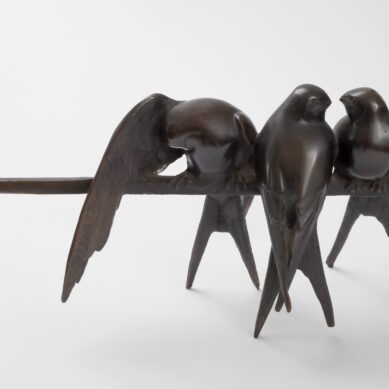You searched
Sculptor
Ennio Tomai
Are you interested in the sales or the purchase of his artworks?
We buy works of this artist
and of other painters and sculptors from the 16th century to the first half of the 20th century
The Berardi gallery offers a free and without obligation service for evaluation of ancient and modern art . To find your way in the art market, very complex and full of nuances, it is better to rely on a professional consultant who can answer fast and concretely to your needs. The clarity of the answers will resolve effectively the need to estimate or sell an asset.
Contact us immediately without commitment
Answers also in 24 hours:
Ennio Tomai
Ennio Tomai
Ennio Tomai was born in L’Aquila in 1893. His training took place during the 1910s in Naples, where he moved at a very young age to attend the Academy of Fine Arts. In addition to his academic studies, he also frequented the studio of the sculptor Filippo Cifariello (1864-1936), although he devoted himself to painting at the same time. His debut at the 1912 exhibition of the Società degli Amatori e Cultori in Rome was as both a sculptor and a watercolourist.
Secessionist influences
Until 1914, the artist travelled around Europe: he went to Paris and to the East, as far as Odessa, a city that was fundamental to his first commissions from the local aristocracy and bourgeoisie.
Back in Italy, he participated in the 1914 Roman Secession with The Critic and in the 1915 Secession with Soul and Matter and a Portrait. These works, conceived or begun in Odessa, have strong Symbolist overtones.
With the outbreak of war, Ennio Tomai enlisted and at the same time worked as an illustrator for the magazine L’Arte Muta between 1916 and 1917. These were the years of a dry and fully secessionist line, which also spilled over into the production of set designs, photographs and advertising posters for the cinema, in particular for Polifilms in Naples.
The animalier sculpture and the characteristic figure of the birds
Alongside the choice of a dry and synthetic graphic style, the observation of 15th-century and Renaissance forms emerges, especially in the sculptures and bas-reliefs of the early post-war period. Beginning with the Monumento ai caduti di Albenga (Monument to the Fallen at Albenga), there is a skilful handling of monumentality, an element that is lacking in his subsequent production of a prevalently decorative nature.
This phase of Ennio Tomai’s sculpture is above all characterised by the choice of animalier subjects and in particular those born of his passion for ornithology. Numerous and varied species of birds, treated with anatomical minuteness and preciousness of line, appeared at exhibitions in the 1920s and 1930s, pleasing both critics and the public. In the meantime, he obtained the chair of metal art at the Art Institute of Naples.
In 1926 he took part in the first exhibition of the Gruppo degli Artisti Abruzzesi residenti a Napoli with a series of sculptures dedicated to birds, while in 1929 he was at the Sindacato exhibition in Naples with Pavoncella, Rapace, Berta minore, Soldato morente and Acquatici. The following year he presented Gazza ladra and Inverno and in 1932 Aquila and La difesa della stirpe. With Falco giocoliere he took part in the 1935 Quadriennale in Rome and with Sparviere in that of 1939.
Dry lines and solid, full volumes characterise all his sculptures of birds in the 1930s and 1940s, such as Colombo and Nibbio. He continued to devote himself to sculpture, with a softer and less severe handling of the contours until the 1950s. He died in Naples in 1969.
Elena Lago












